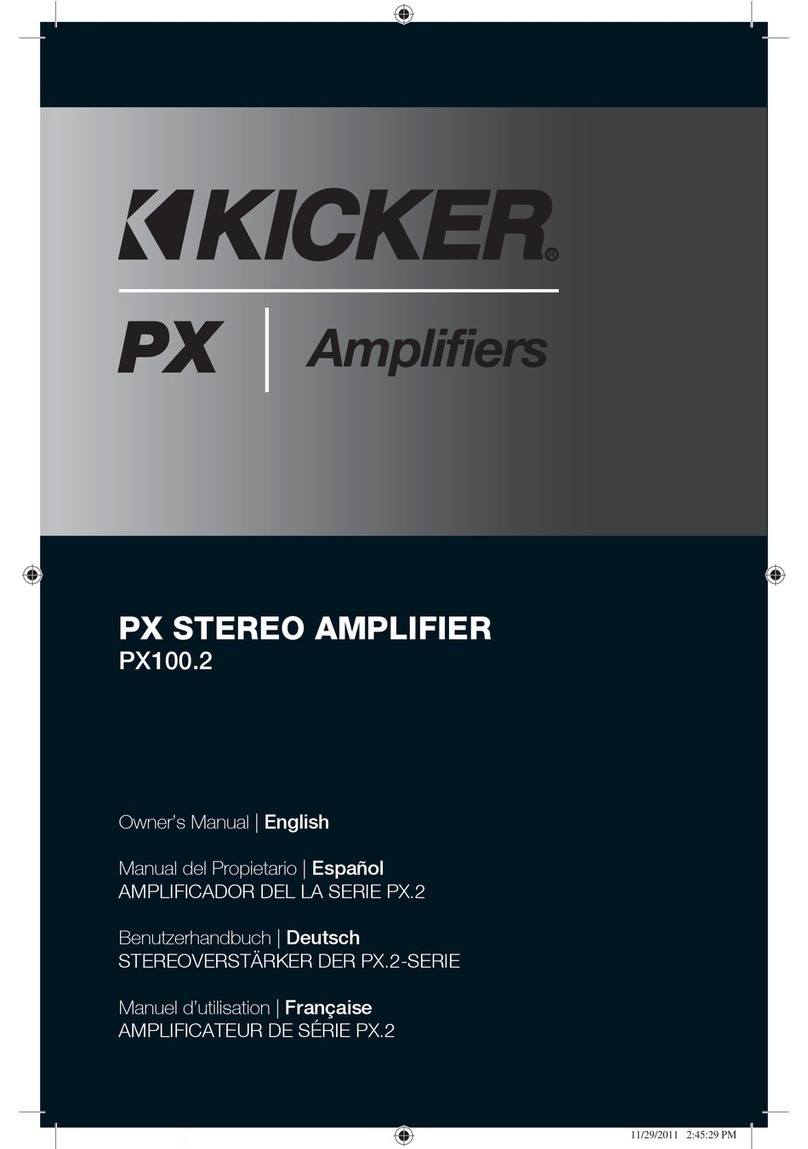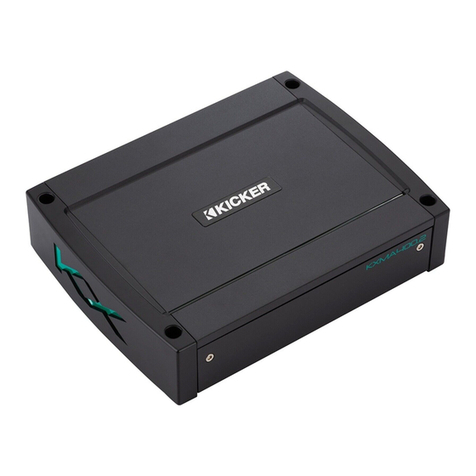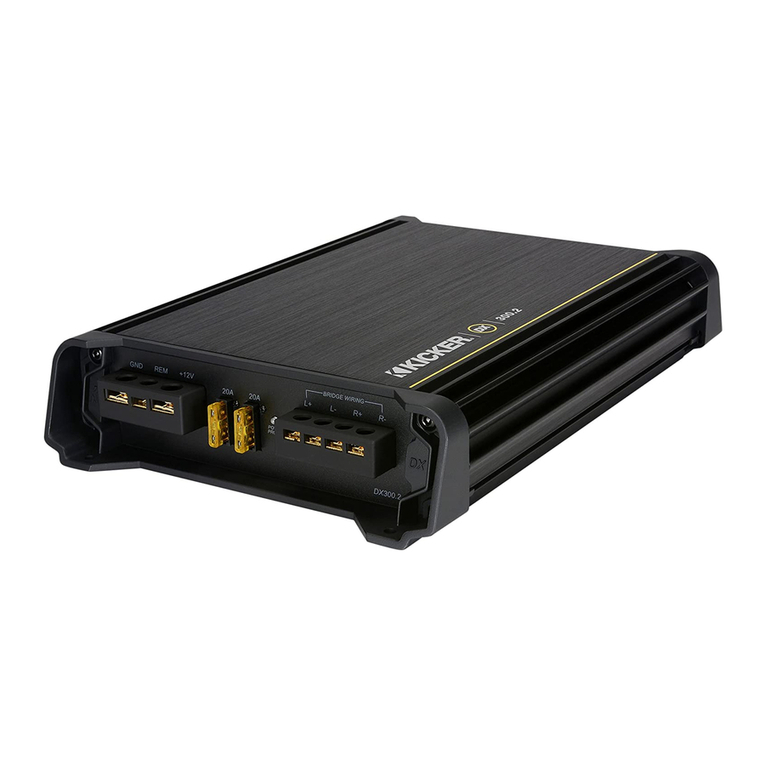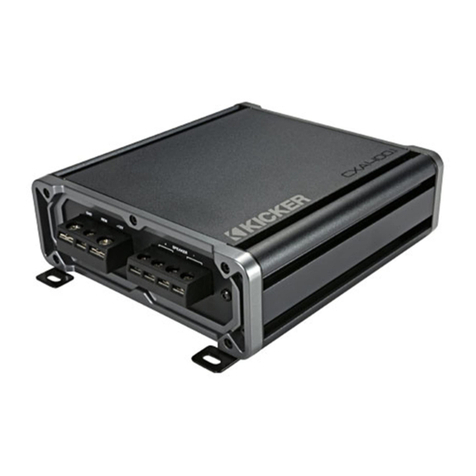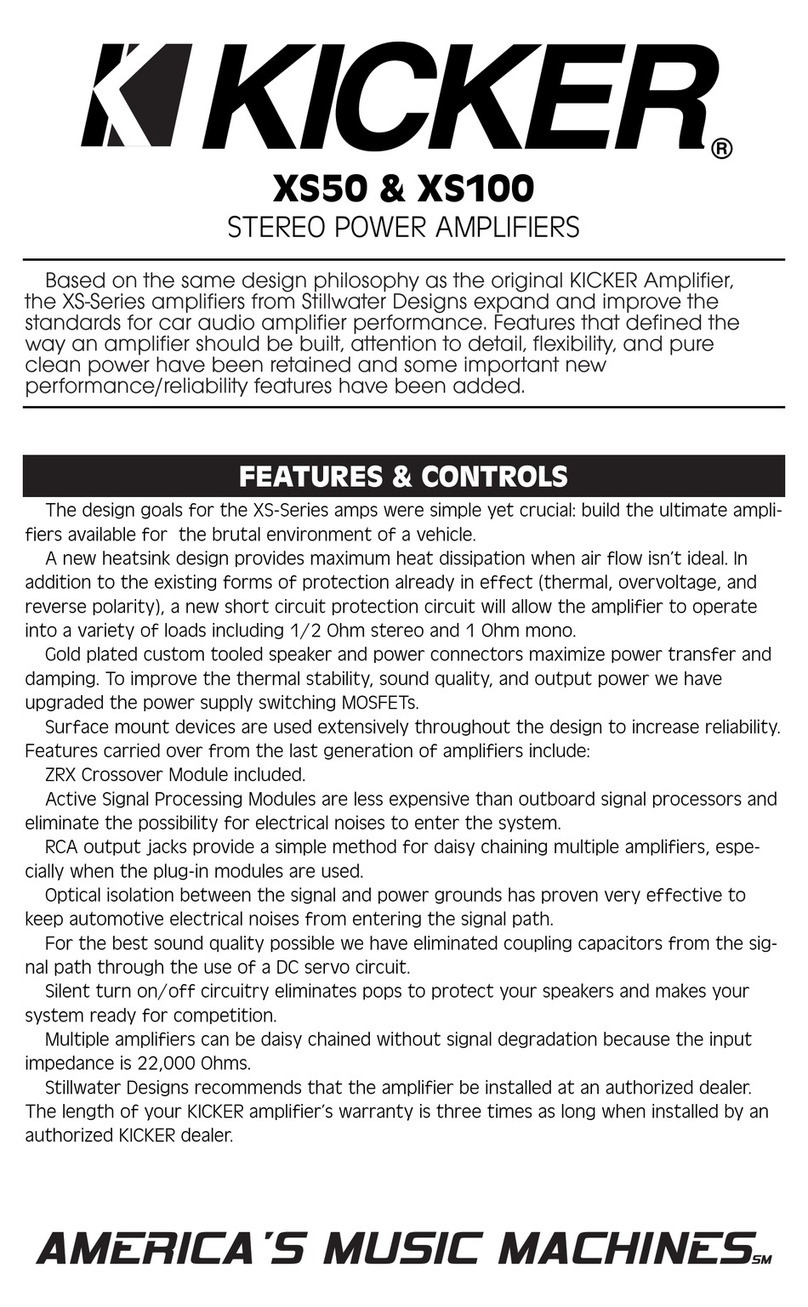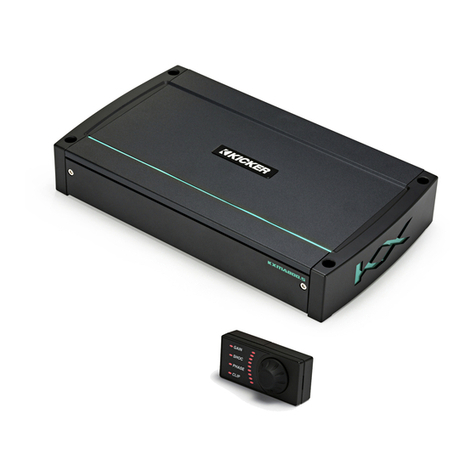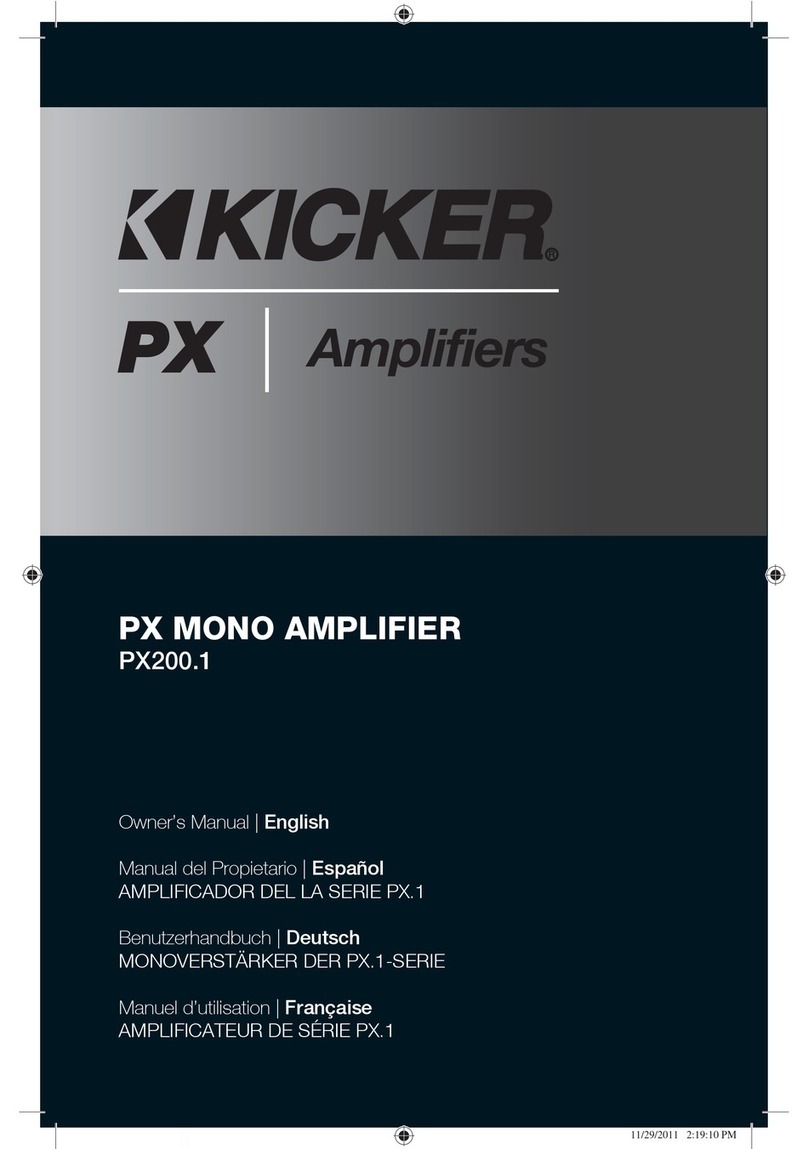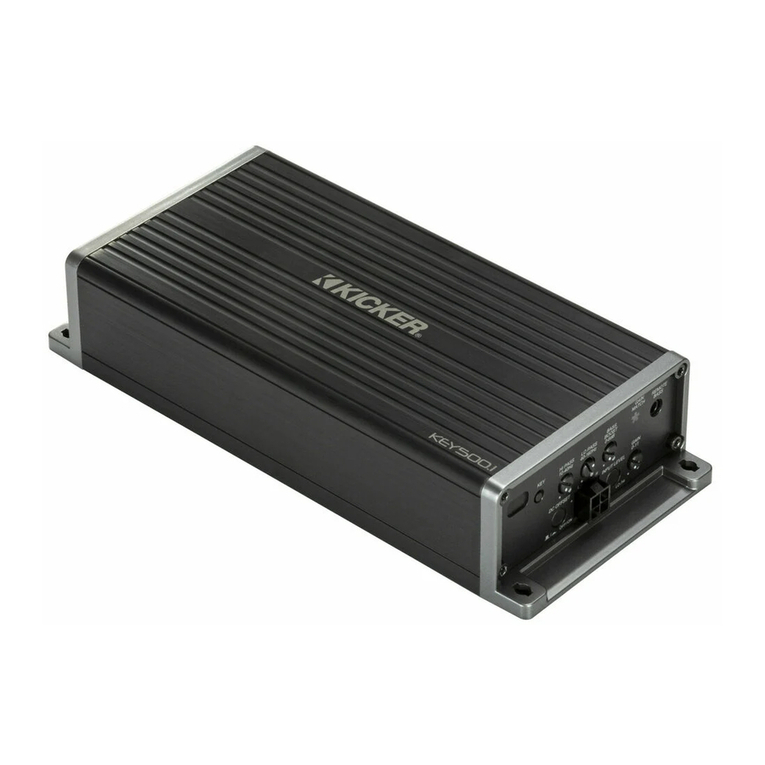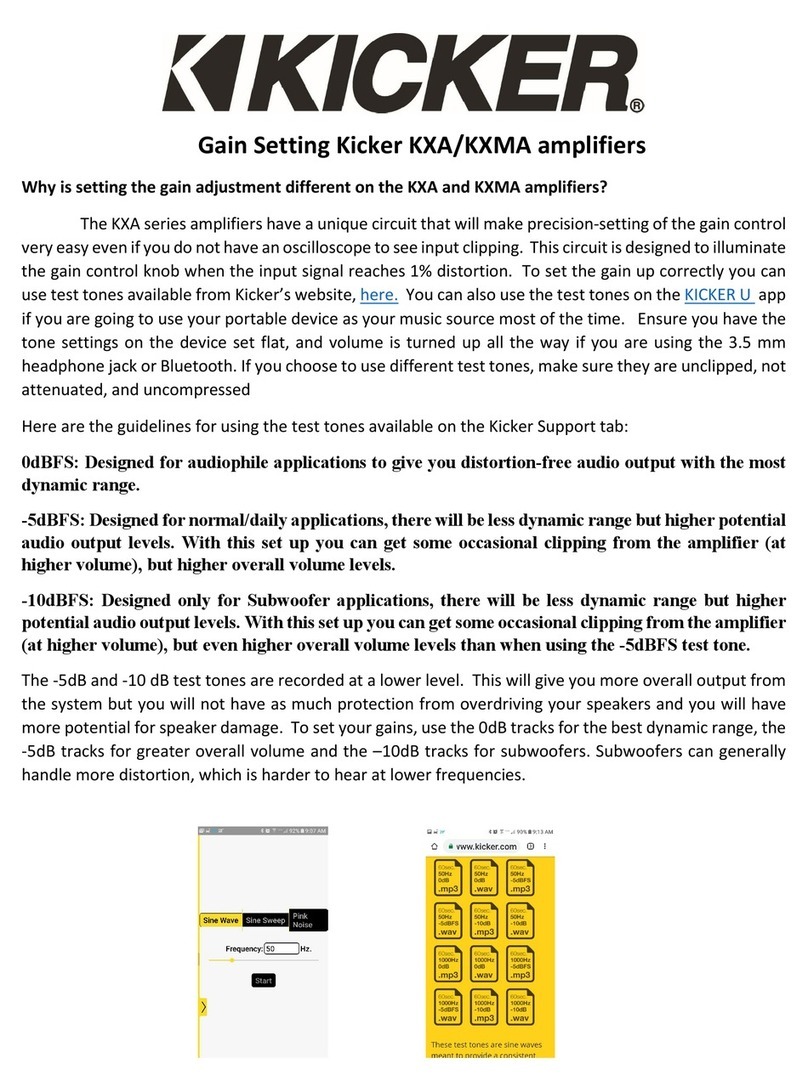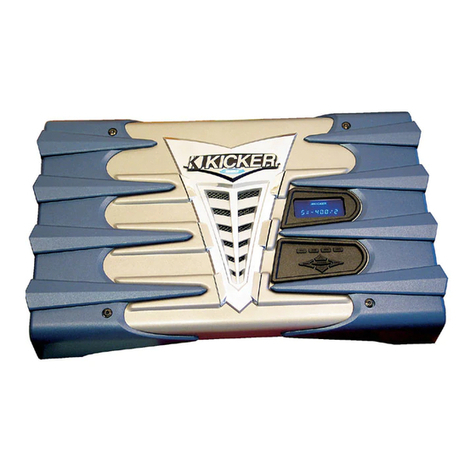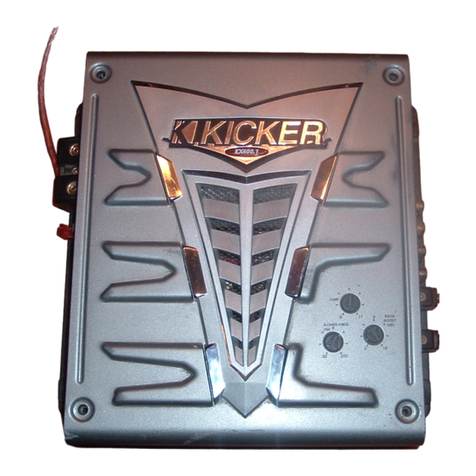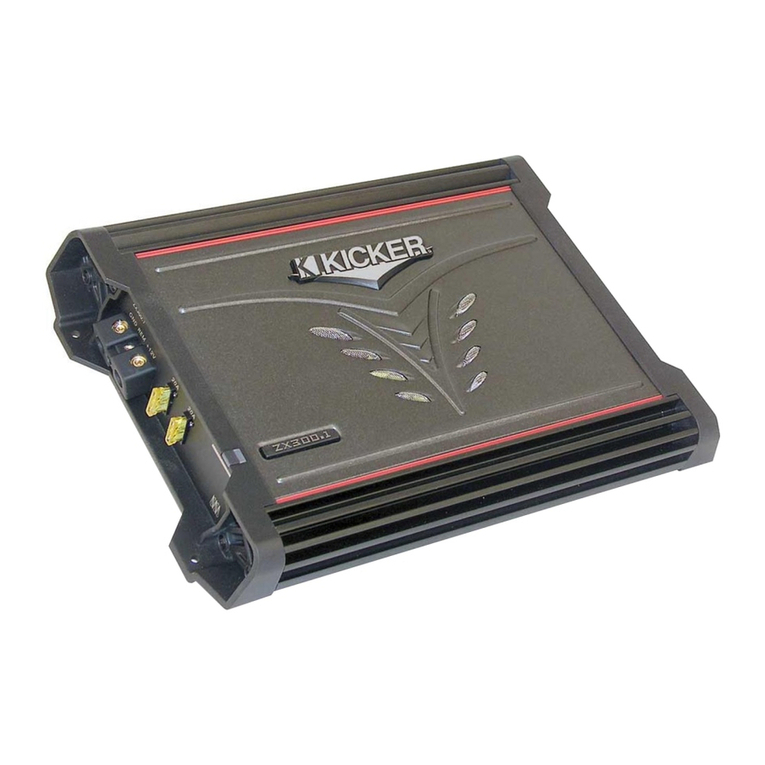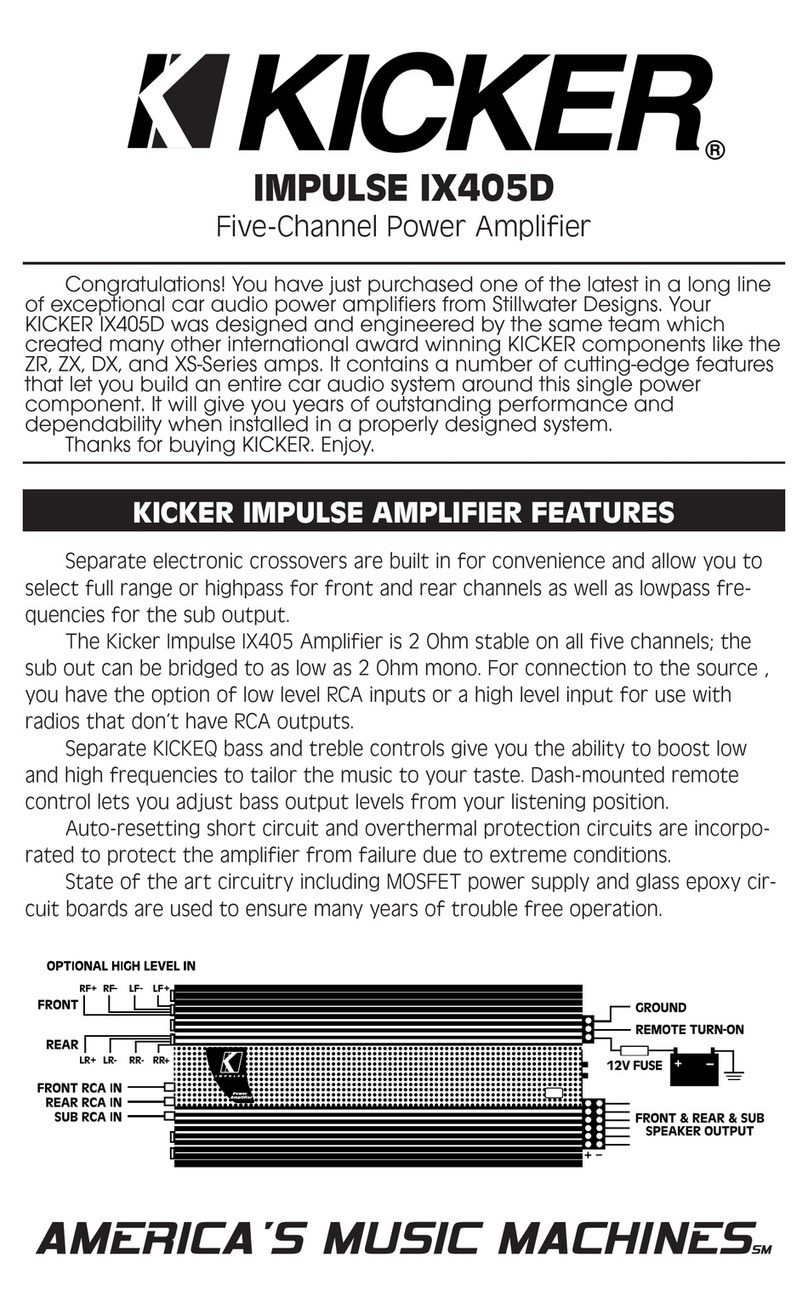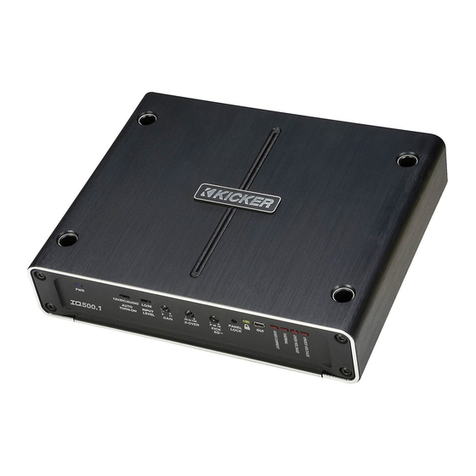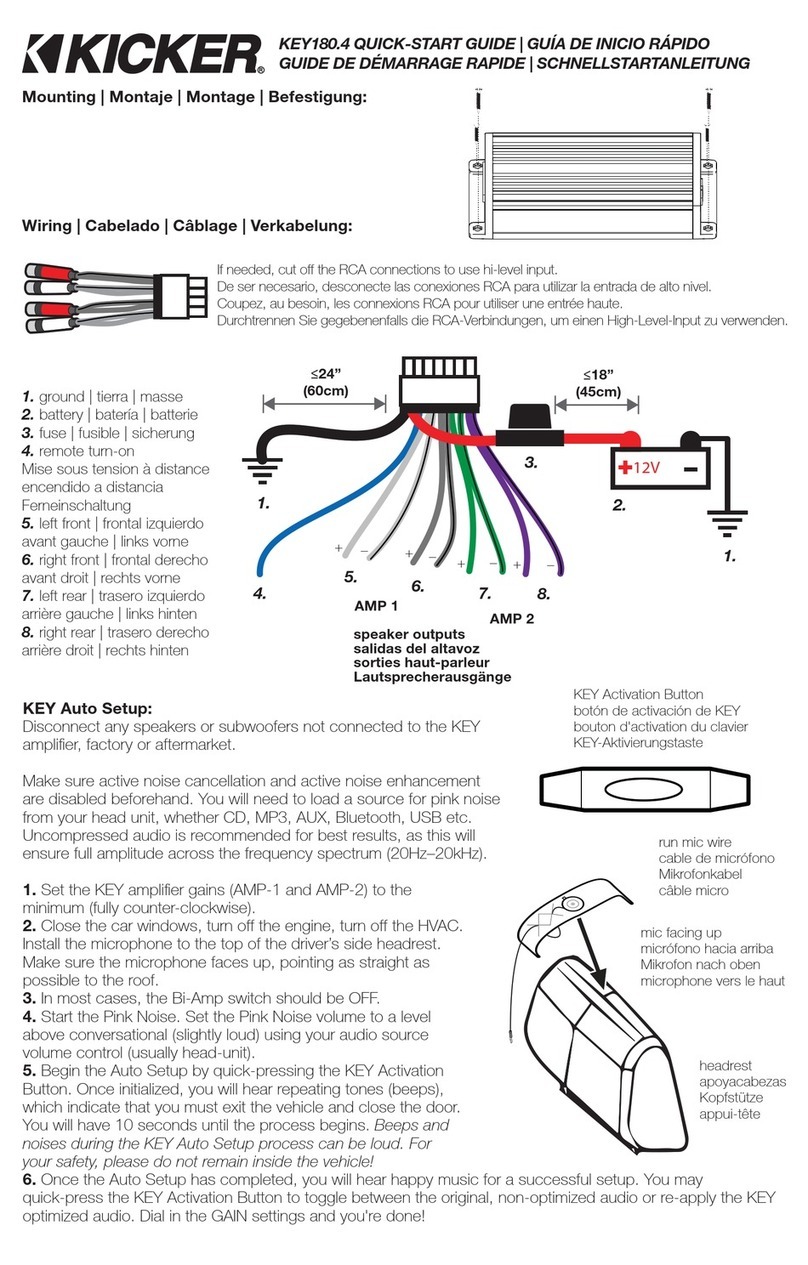
6
audio inputs
OPERATION
6
6
Automatic Turn-On Selection: The CX series offers two automatic turn-on modes; +12V and DC Offset.
• Remote Turn-On: Run 18 gauge wire from the Remote Turn-On Lead on your source unit to the terminal
labeled REM between the amplifier’s positive and negative power terminals.
• DC Offset Turn-On: The DC Offset mode detects a >2.5V DC offset from the HI-Level speaker outputs
when the source unit has been turned on.
Input Level: The RCA inputs on KICKER CX amplifiers are capable of receiving either Hi or Low-level signals from
your source unit. If the only output available from your source unit is a Hi-Level signal, simply press in the Input Level
switch on the amplifier. Refer to the wiring section of this manual for additional instructions.
Crossover Switch: Use the XOVER switch on the end panel of the amplifier to set the internal crossover to OFF,
HI or LO. When the switch is set to OFF, a full bandwidth signal will be amplified. Set the switch to HI if you want the
amplifier’s internal crossover to serve as a high-pass filter. Set the switch to LO if you want the amplifier’s internal
crossover to serve as a low-pass filter. Never change the crossover “OFF/HI/LO” switch setting with the audio
system on!
Crossover Control: The variable crossover on the front of the CXA360.4 allows you to adjust the crossover
frequency from 50–200Hz. The setting for this control is subjective; 80Hz is a good place to start.
Fader Switch: Depress the fader switch if you are running two sets of inputs (front and rear for example) to the
amplifier. Leave the fader switch OFF if you want to drive all channels from a single stereo input.
Input Gain Control: The input gain control is not a volume control. It matches the output of the source unit to
the input level of the amplifier. Maximum power out of the amplifier is possible with the gain in the lowest position.
Incorrectly setting the gain can result in distorted output or damage to, and premature failure of, your speakers. For
a quick setup, turn the source unit up to about 3/4 volume (if the source unit goes to 30, turn it to 25). Slowly turn
up (clockwise) the gain on the amplifier until you can hear audible distortion, then turn it down a little.
To use the preferred method of setting the input gain using a voltmeter or oscilloscope, begin by turning off the
amplifier and disconnecting all speakers from it. Turn the gain knob completely off (counterclockwise) and all
crossovers off, or to their least effective setting. Turn the bass boost knob completely off (counterclockwise). If a
remote bass accessory is connected to the amplifier, turn it completely on (clockwise). Ensure all EQ and DSP
settings on the source unit such as bass, treble, fader, seating position etc are set to linear, flat, center, or off. Turn
on the amplifier. Play a 0dB sine wave through your source unit and increase the volume to about 3/4 of maximum.
Sine wave tracks can be downloaded for free from KICKER.com under the “Support” tab. Use the 50Hz sine wave
to set the gain for a subwoofer and the 1kHz sine wave for full-range speakers. Set your voltmeter or oscilloscope
to measure AC voltage. Place the voltmeter’s probes on the amplifier’s speaker output terminals. With the sine wave
playing, slowly turn the gain knob clockwise and watch the AC voltage on the voltmeter increase. When the desired
voltage is shown (reference power chart insert), or you start to see the waveform square off stop increasing the
gain, turn the amplifier off, reconnect all speakers and set the crossovers to your desired setting. Your gain is now
set for maximum unclipped power from the amplifier. If you increase amplitude using settings on the source unit or
the bass boost on the amplifier it will introduce distortion and you will need to redo these steps.
